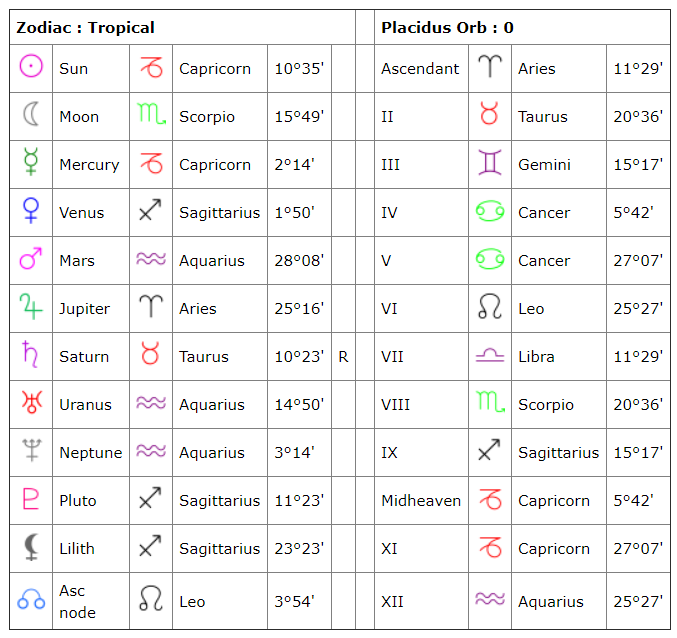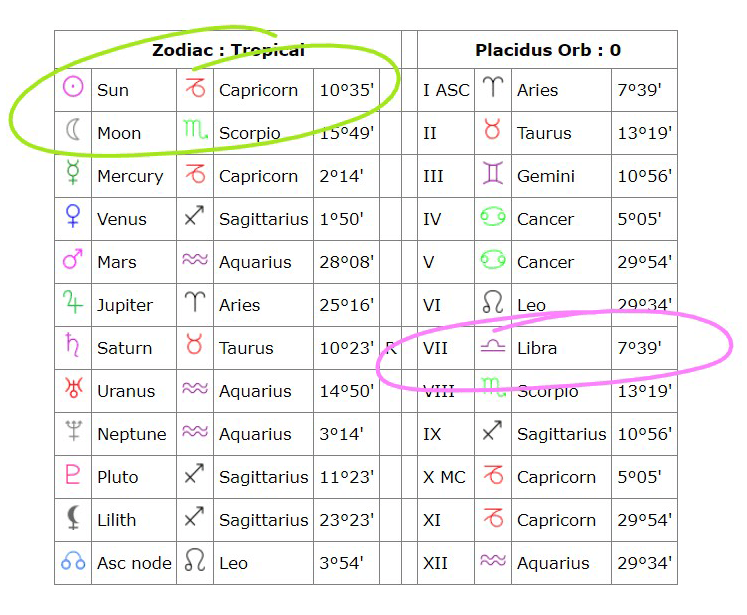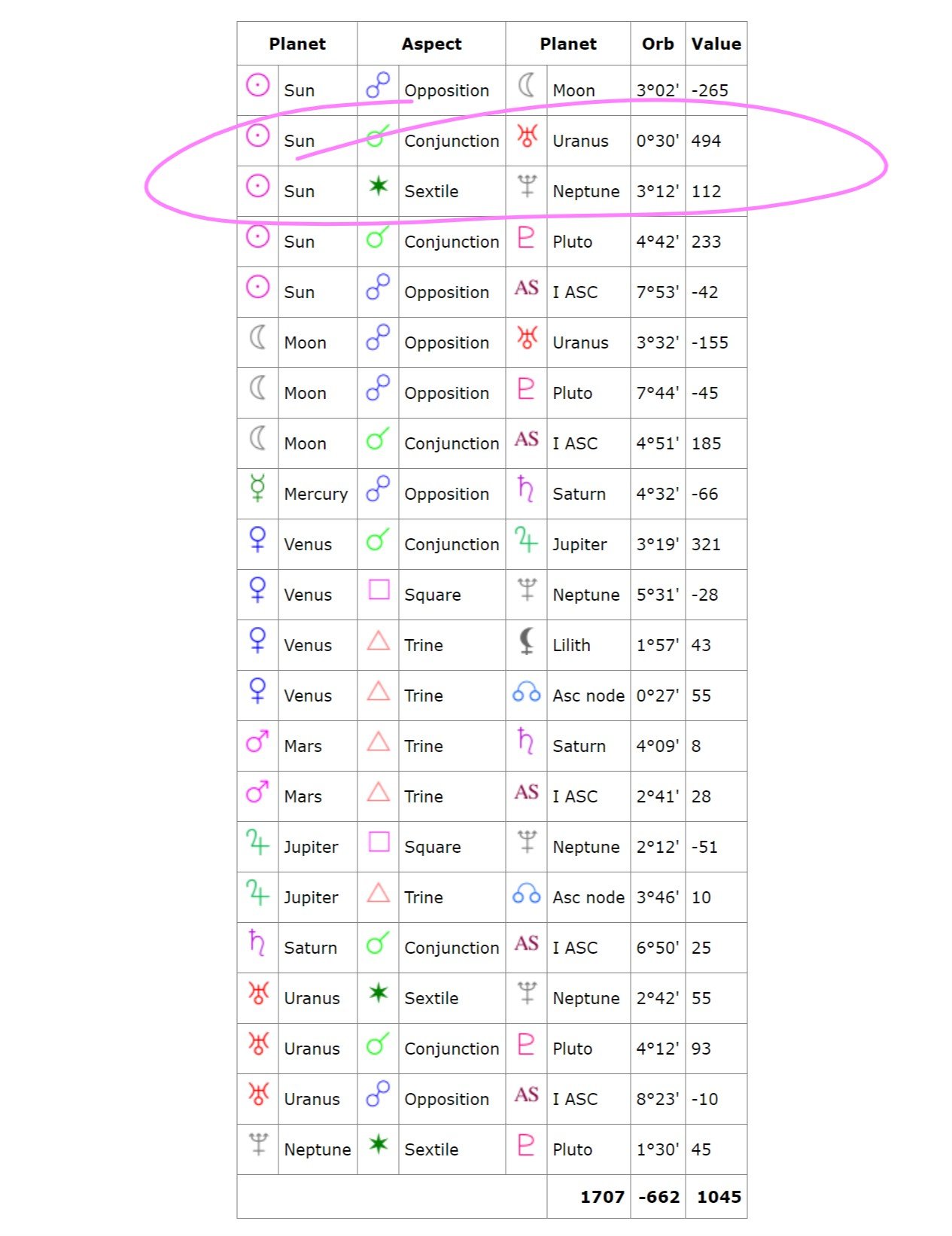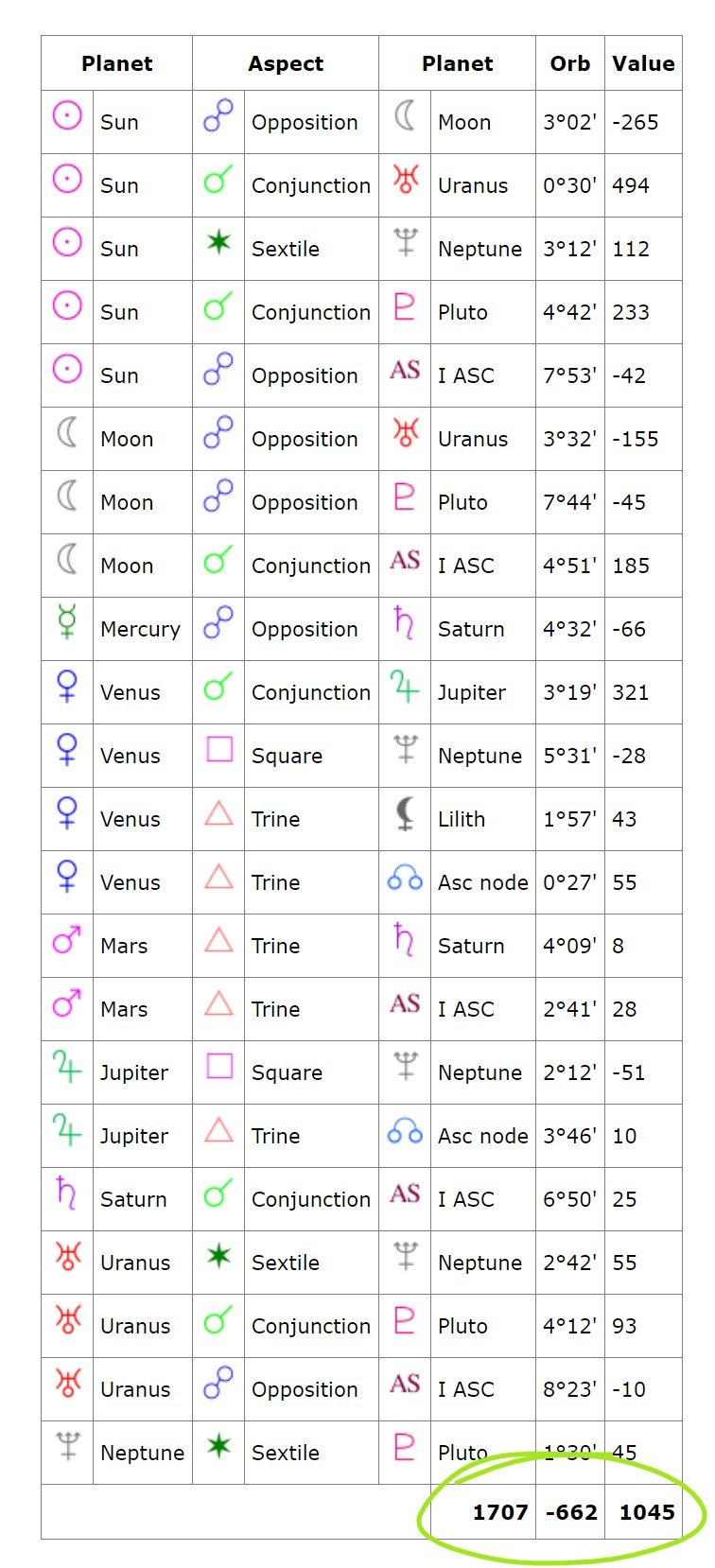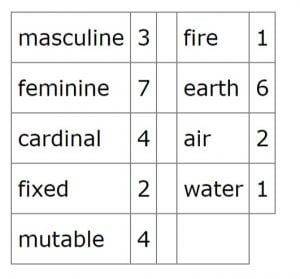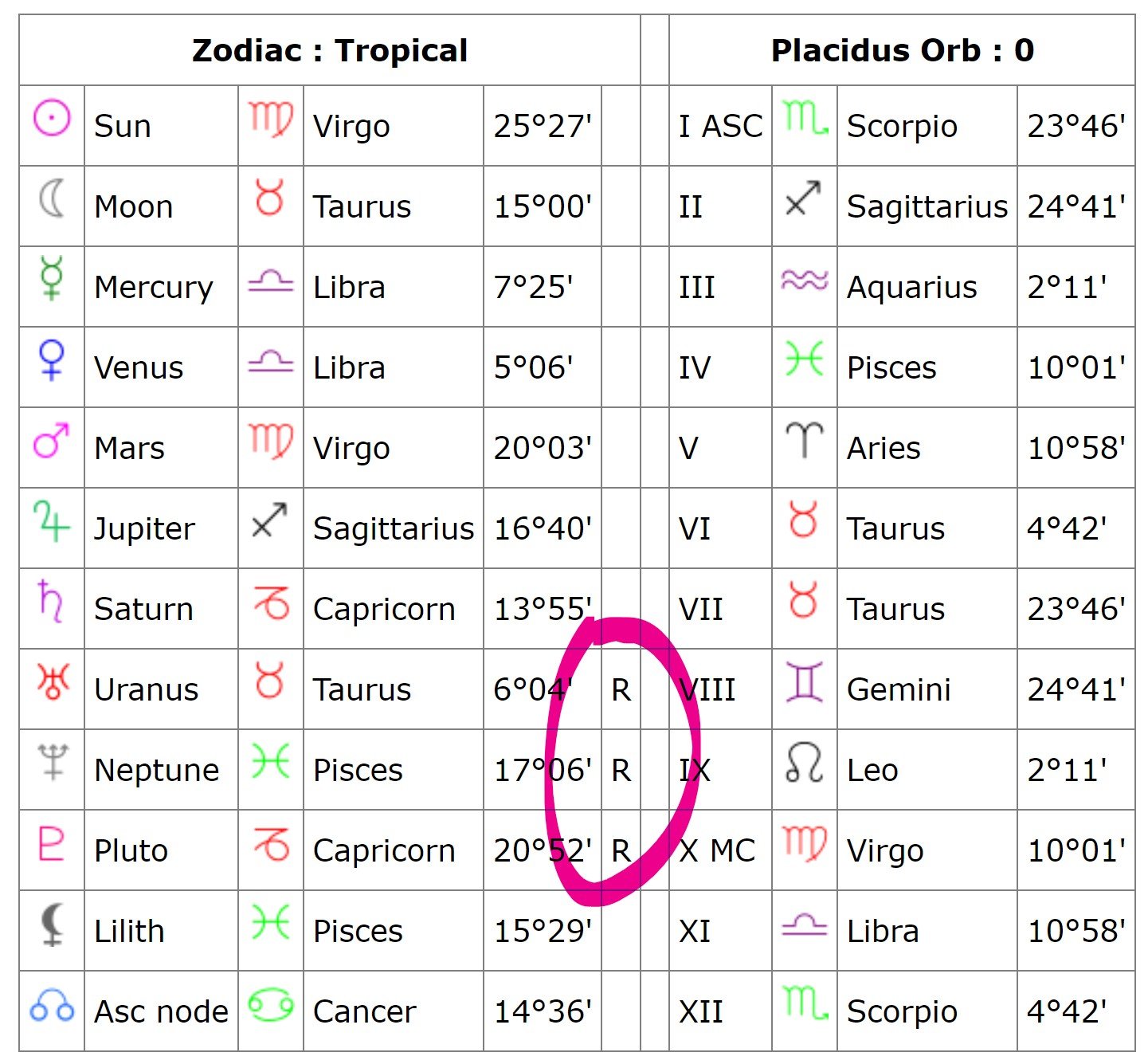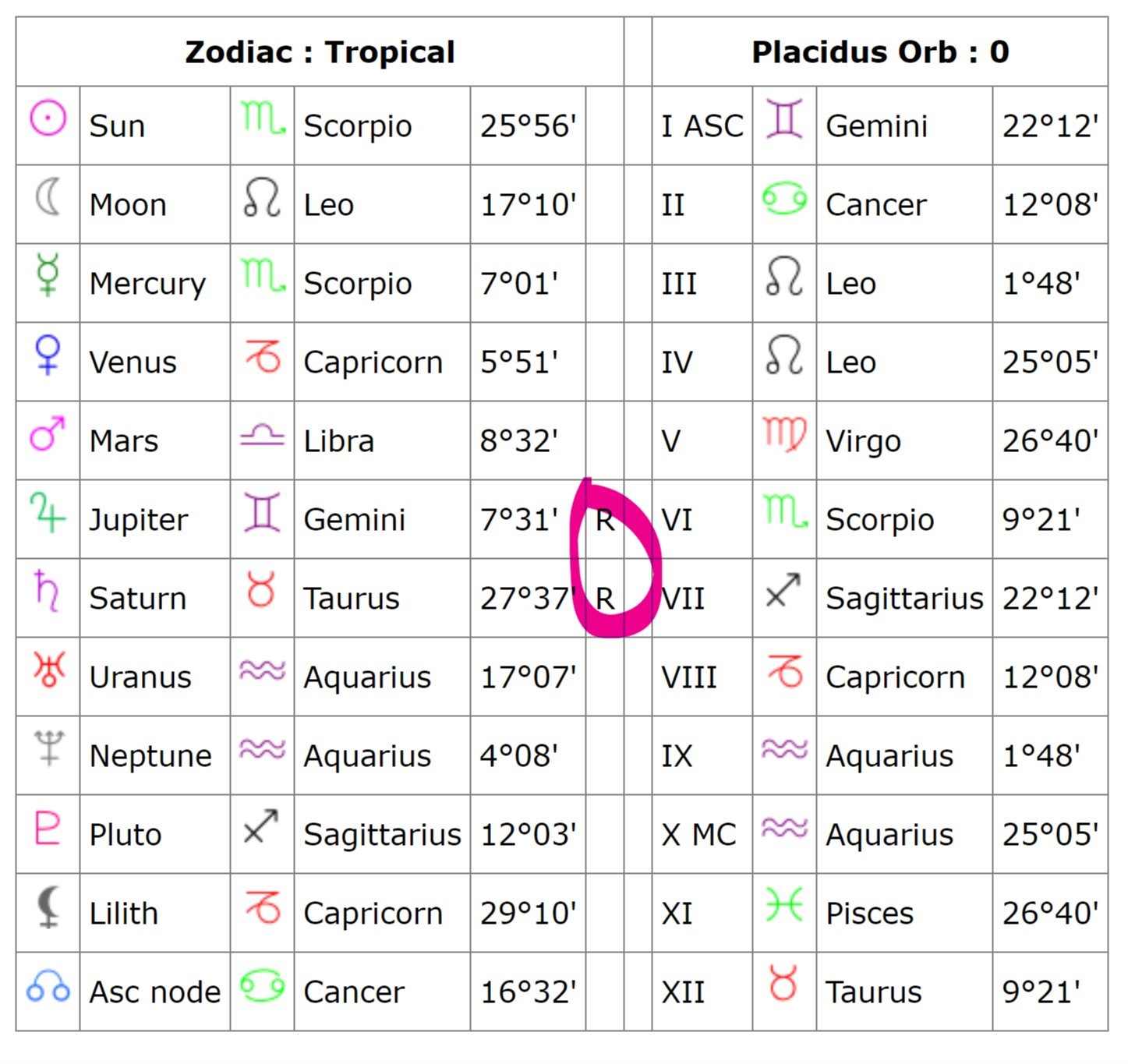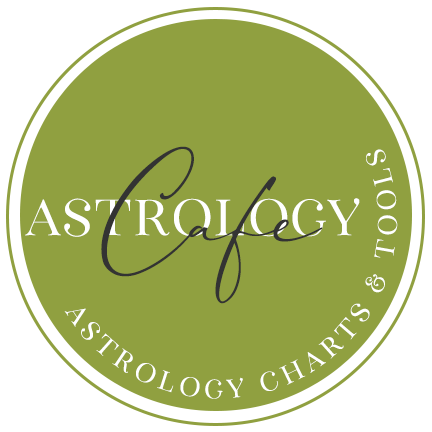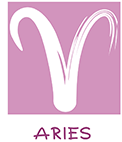Understanding the Free Natal Chart Report
Free Natal Chart Report: Understanding the Tables
The following tutorial aims to demonstrate how to use and understand the Free Natal Chart report found on Cafe Astrology’s free report section.
Note that you do not need to know the zodiacal, aspect, and planetary symbols to read your astrology report since the tables spell out the symbols’ labels and the interpretations spell out the tables’ listings. This article is here for those who want to explore what the tables in the report mean and is optional. If you want to learn to read the symbols, then please refer to them here: Astrology Symbols: Signs and Astrology Symbols & Glyphs. You might also benefit from learning about the polarities or opposite signs here: Polarities: Opposite Signs and Houses. If you need help understanding how the houses are arranged in the natal chart, see Understanding the Astrological Chart Wheel.
I use various random charts for illustrative purposes, including one with data: January 1, 2000, at 12:00 PM, in New York, New York. This is the default chart (although there is no default location) in the Free Report Section here.
After entering this data in the Free Report Section of the site, you will see a list or table of planetary positions and house cusps in the report itself, which I have copied here:
Here, I explain various charts and tables in the report. Please note, however, that you don’t have to know how to read the tables to understand the report since each factor listed in the table is listed and interpreted in the report/analysis.
Above, on the left side of the table, you’ll find the listing of planets in the natal chart and their positions by sign and degree. Circled in green, for example, is the position of the Sun. Here we see the Sun is in Capricorn at 10 degrees and 35 minutes.
On the right side of the table (or directly below if you’re on mobile or a small screen), you’ll find the positions of the houses in your natal chart. This does not appear if the unknown birth time option was selected to create the chart since these positions cannot be determined without a fairly accurate birth time.
Circled in pink above is an example house cusp position. The Roman numeral VII represents the 7th house. In this example, the seventh house of the chart begins at 7 degrees and 39 minutes of Libra. If you don’t see these house cusp listings, it’s because you selected Unknown Birth Time.
Note: All of the placements in the table above appear in your report. For example, you’ll see that Jupiter is in Aries listed in the table above, and in the report below the tables, you’ll find the listing “Jupiter in Aries” along with an interpretation.
In the table depicted above, you’ll find the list of major aspects found in my natal chart. Two of the aspects are circled in the pictured aspect table. The first is Sun conjunct Uranus. The value in the “orb” field next to this aspect is 0 degrees and 30 minutes which is very small or close.
The orb value reveals how far away an aspect in your chart is from exact. In the very rare case that an aspect is exact, the orb would be 0 degrees and 00 minutes. In this example for Sun conjunct Uranus, the orb is less than one degree– it’s zero degrees and 30 minutes which is one-half of a degree, and this is considered a very close orb. Any orb that is less than one degree means that the aspect is very close or tight, and considered strong. The smaller the orb, the closer and stronger the aspect.
A conjunction aspect by definition occurs when two planets or points are 0 (zero) degrees apart, but we allow some room–or an orb of influence–under which we consider these planets/points as conjunct. Different astrologers allow different orbs. If we were to allow a 7-degree orb, for example, then planets that come within 7 degrees of one another would be considered to be connected by a conjunction, or we would say that the planets are conjunct.
In the value field, you’ll see a relatively high number, 494, on the Sun conjunction Uranus aspect line. This number is a relative weighted value that is there to help illustrate whether or not an aspect might be considered strong, and in which direction (negative or positive). Values, in this case, are subjective, much like bar graph values found on horoscopes. They are not hard-and-fast rules but can be useful to quickly sum up the strength of a particular influence in a chart.
This value can be positive or negative, reflecting the nature of the influence (whether it’s generally considered positive/harmonious or negative/challenging). It’s meant to show how strong the aspect might be, and is based on:
- the planets or points involved (inner planets are more personal, for example, and would receive a higher score, while outer planets are less so and are more generational in influence, and thus their aspects may not score as highly)
- as well as the closeness of the aspect to exact (the smaller the orb, the tighter the aspect, and the stronger it’s expected to be).
The second aspect circled above is Sun sextile Neptune. Since it involves the Sun and is thus highly personal, it receives a higher value straight away. However, the aspect is a sextile and is not especially close in orb, so its weighted value is less than the Sun-conjunction-Uranus aspect, weighing in at 112 instead of 492. If the aspect were a conjunction or square, or even a trine, the weighted value would be higher. It would also be higher if the orb were lower, which would mean the aspect was closer to exact and thus stronger.
So, the Sun sextile Neptune remains an important aspect but it may be more subtle than the Sun’s conjunction to Uranus in this particular chart.
While the orb is a mathematical value, the value score is a subjective one. Not any one particular aspect can be considered wholly “bad” or “good” since a person can work with its energies in constructive or destructive ways. Some aspects are typically easier to manage and others present a challenge or struggle.
Astrologers use many different methods of determining the overall weight of an aspect that are not factored into these weighted values. For example, the planet that’s often considered the chart ruler (the one that rules the sign of the Ascendant) may be given more weight than another planet, and this wouldn’t be factored in here. A computerized reading can never replace an astrologer’s assessment of your chart. Side note: that is one of the reasons why I refuse to call computerized reports “readings” on my site. Even so, these weights can help us quickly home in on aspects that are likely to have more strength than others and can be quite useful as long as we keep our minds open.
In the above example, final values are circled at the bottom of the table. These are totals of the positive values in the aspect chart, totals of the negative values in the aspect table, and then a sum of the two. In the example above of my chart’s aspects, you’ll see that there are more positive influences than negative, and with the total values guide, we get a general sense of how much so. There isn’t any particular number or score that suggests a “good” or “bad” chart, but these values can be useful for comparison purposes.
In the example above of a different chart altogether, you’ll see higher values although the distribution is similar (the final value is about 70% of the total number while in the example above this one, it was closer to 60%). This generally means there is more planetary aspect activity or stronger, closer aspects.
In the above example table, you’ll see the counts of the major luminaries and planets in signs for this particular chart that are masculine and feminine, as well as the distributions of signs in the elements (fire, earth, air, and water), and in the modes (cardinal, fixed, and mutable).
| Masculine signs | Aries, Gemini, Leo, Libra, Sagittarius, and Aquarius |
| Feminine signs | Taurus, Cancer, Virgo, Scorpio, Capricorn, and Pisces |
| Cardinal signs | Aries, Cancer, Libra, and Capricorn |
| Fixed signs | Taurus, Leo, Scorpio, and Aquarius |
| Mutable signs | Gemini, Virgo, Sagittarius, and Pisces |
| Fire signs | Aries, Leo, and Sagittarius |
| Earth signs | Taurus, Virgo, and Capricorn |
| Air signs | Gemini, Libra, and Aquarius |
| Water signs | Cancer, Scorpio, and Pisces |
In the example here, there are considerably more feminine than masculine signs represented. There is also a preponderance of Earth signs.
Please note that the above counts include the signs of the Sun, Moon, Mercury, Venus, Mars, Jupiter, Saturn, Uranus, Neptune, and Pluto only. There are of course many other bodies that can be analyzed in a chart, but it’s not worthwhile to tally up counts for all of the asteroids, centaurs, mathematical points, parts, and so forth, as they can skew things unnecessarily and detract from your analysis.
Pictured above is a table of the house positions of planets or planets in houses. For example, circled above is Mars in VIII which means that, in this chart, Mars is in the 8th house. This factor is listed and interpreted in the interpretive report on the same page, as are all other factors listed in this table.
Note that “Asc node” is the Ascending Node or the North Node of the Moon. I have since changed the notation for the Ascending Node from “Asc node” to “N Node” since it was brought to my attention that there were many people reading the Ascending Node sign as their Ascendant and claiming that the calculator was wrong or unstable, which of course is not true. I am hoping this new notation will clear up misconceptions. The North Node and Ascending Node are the same things with slightly different names. Note that the calculations have not changed. The Ascendant remains as the start of the first house in the Placidus house system and the North or Ascending Node position remain the same. This is simply a label change on the table. Although the Ascending Node is an accurate name for the North Node, the North Node has since become the more popular label.
In the above example, you can find this person’s retrograde planets by identifying the R next to the planet. Above, Uranus, Neptune, and Pluto are retrograde. Note that these bodies spend many months each year in retrograde motion, so finding the outer planets retrograde in a chart is very common.
In the above, Jupiter and Saturn are retrograde. The other listed points, up until Pluto, are NOT retrograde if there is no “R” next to them. Note that the Sun, Moon, and Ascendant cannot be (never are) retrograde. Black Moon Lilith is the Mean value of the point (there are multiple bodies called Lilith in astrology). The True North Node is frequently retrograde but its retrograde is not useful to note so it’s not listed here.
A note about the included planets and points: Because many people learn astrology (and many other subjects such as nutrition and psychology) in unconventional ways these days, they may not have a good grasp of the basics before studying additional points and topics. There are people who learn about an obscure asteroid before they learn about the basic planetary positions, and wonder why it’s not included in the list.
This kind of learning is not necessarily wrong or ineffective–and it’s something we have to get used to–but it certainly helps to recognize the value of learning the basics before moving onto specialized topics. There are people whose interest in astrology is sparked by an article about the Black Moon, for example, and this is great since it drew them in to look a little further, but they may not yet grasp that the Sun, Moon, Mercury, and so forth are far more important than the Black Moon. In truth, people can learn astrology in a far less chaotic manner if they take things one step at a time and try not to skip too far ahead. It’s much like if someone were to begin a math book at chapter 22 and then skip back to earlier chapters later – they can learn in this manner, and in fact they may not have taken interest in the subject if it weren’t for that chapter 22 topic, but it makes sense to check out the first chapters at some (hopefully early) point so that they can understand and appreciate later chapters more fully.
For these reasons, it’s important to first understand the positions of the basic planets and points listed in the tables above before considering the additional points. These are things you should learn first and well before moving on. I love additional points, parts, and so forth, and have had a lot of fun with them and gained insight from them over the years, but I suggest getting a strong understanding of the basics before adding the asteroids, hypotheticals, and other points to your analysis. It may be best to keep in mind that additional points give you additional information but they don’t provide you with the basics or core factors of the chart.
Appendix to this article: Roman Numerals
The following are Roman Numeral equivalents for the labels used to identify the houses of a chart:
| Roman Numeral | House |
|---|---|
| I | First house |
| II | Second house |
| III | Third house |
| IV | Fourth house |
| V | Fifth house |
| VI | Sixth house |
| VII | Seventh house |
| VIII | Eighth house |
| IX | Ninth house |
| X | Tenth house |
| XI | Eleventh house |
| XII | Twelfth house |
See Also:
You May Also Like:
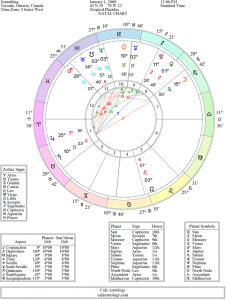
How to Find a Birth Date from a Birth Chart

Historical Time Zones
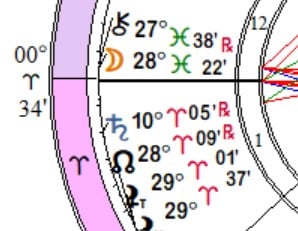
Accuracy of Degrees (and Minutes) of the Ascendant
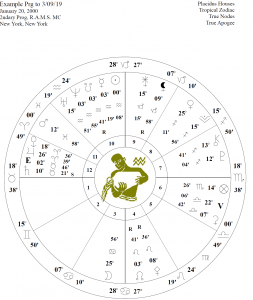
Calculating the Progressed Ascendant
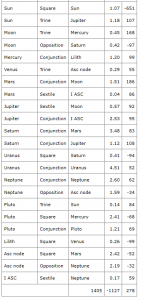
Compatibility Report – Scoring
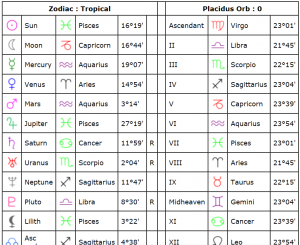
Using the Free Report Section on Cafe Astrology
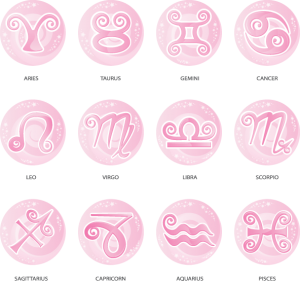
Report Orders FAQ
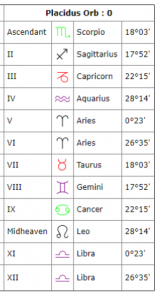
Free Reports FAQ
Sponsored Links:
